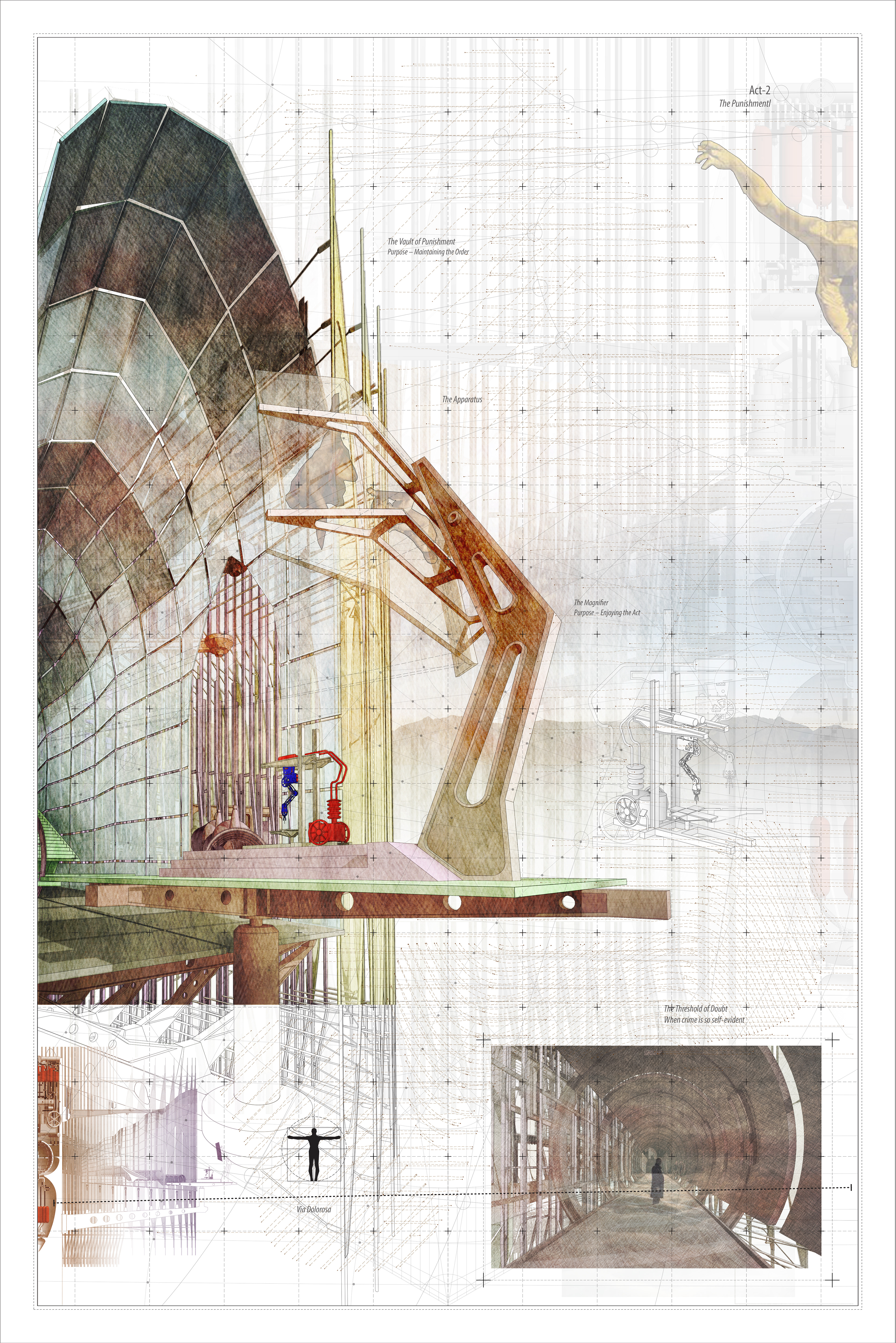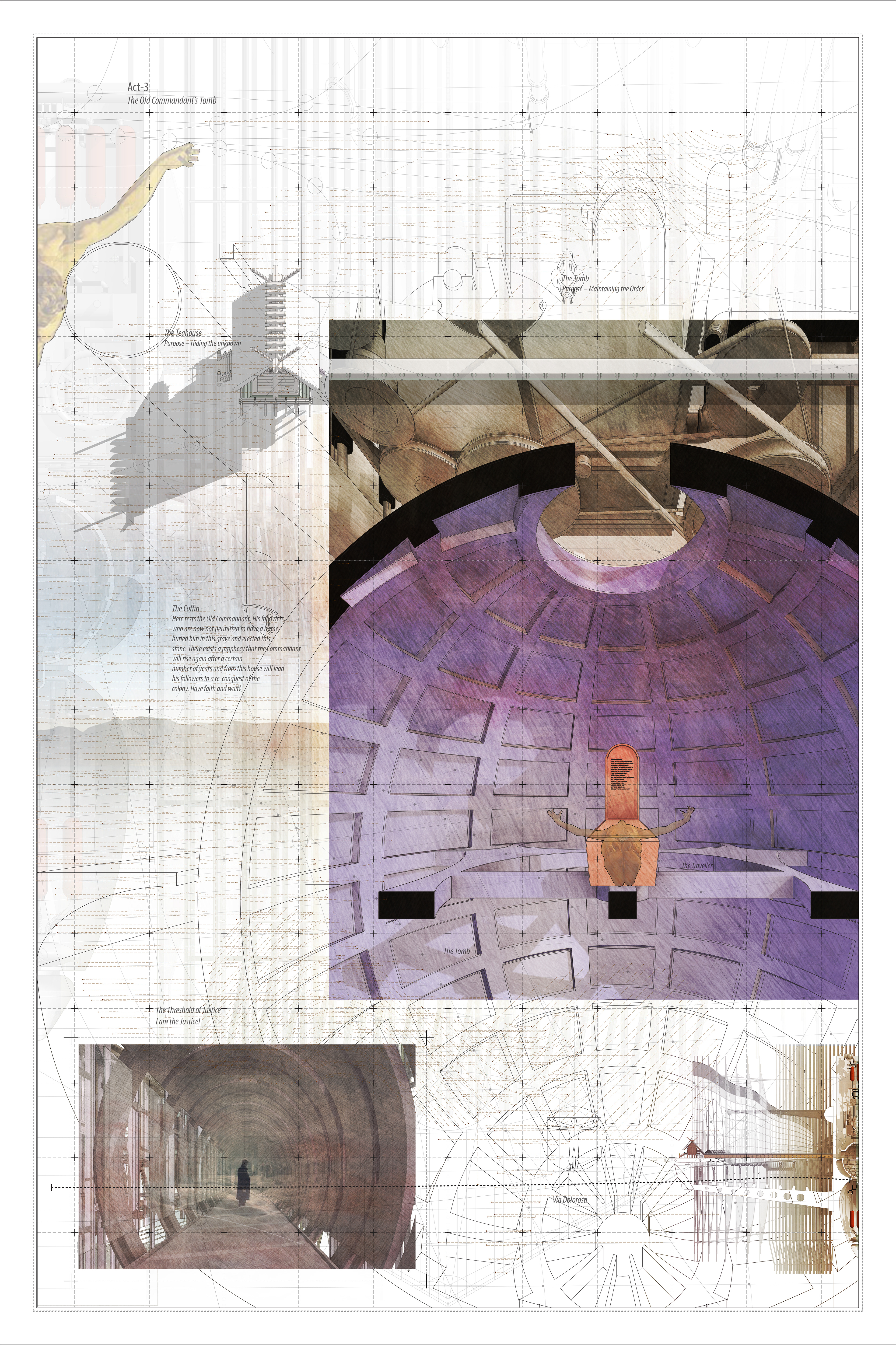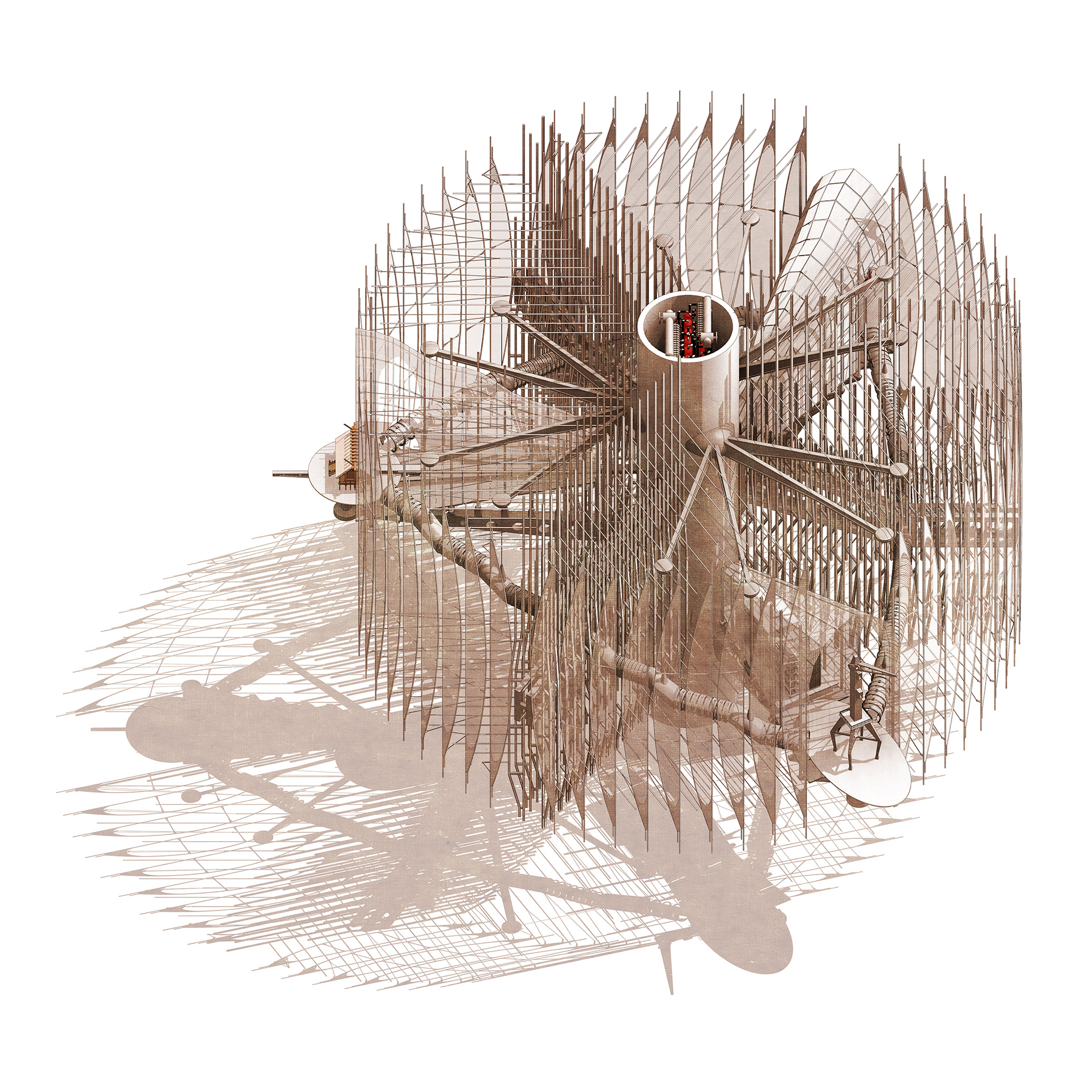BIM vs BIM
or
In the Penal Colony
or
In the Penal Colony
Winter 2017, Thesis
Professor: Perry Kulper
Professor: Perry Kulper
Drawing is dead, long live the drawing!
Drawing can no longer compete against BIM (Building Information Modeling) at delivering information of a building’s constructability. From now on drawing must relinquish its right over architecture’s physical qualities and become a critical tool that expresses the theoretical and allegorical qualities of architecture.
The thesis - Building Information Modeling VS Being Imaginary Mechanism - attempts to establish a new dialectical relationship between drawing and BIM while it presents a design based on Franz Kafka’s penal colony. Frantz Kafka’s “In the penal colony” establishes a situational structure where the physical and spatial qualities of the design are established through a BIM model, while the narrative and the allegory of the design (and the story) remain in the realm of the drawing.
The thesis - Building Information Modeling VS Being Imaginary Mechanism - attempts to establish a new dialectical relationship between drawing and BIM while it presents a design based on Franz Kafka’s penal colony. Frantz Kafka’s “In the penal colony” establishes a situational structure where the physical and spatial qualities of the design are established through a BIM model, while the narrative and the allegory of the design (and the story) remain in the realm of the drawing.
The new type of drawing - Being Imaginary Mechanism - is to be a new medium to represent the allegory of a design as opposed to the drawing’s original purpose. Part of the claim is that there is room for both, for BIM and for BIM, and only by establishing the clear roles of each will drawing be saved. The BIM model demonstrates the spatial and physical qualities of the design along with the richness of the data, while the drawing demonstrates the richness of the narrative and other dramatic aspects of the design.
Therefore, Building Information Modeling is a concern of the question of HOW, while Being Imaginary Mechanism is a concern of the question of WHY. Thus, this new dialectical relationship shall produce a critically driven design that can exist even without being built!
Thou shalt draw lines of the wall no more, but the lines of the life of the building!

Act-1: The Arrival

Act-2: The Punishment - Act-3: The Old Commander’s Tomb

Act-3: The Departure
The Triptych
The Triptych drawing establishes the situational structure for the
narrative of the story – In the Penal Colony, upon which the design
rests. The drawing introduces the allegorical and dramatic aspects
of Kafka’s world alongside the key protagonist of the story.
Each drawing shows each act of the story;
Act-1; The Arrival, Act-2; The Punishment, Act-3; The Tomb, Act-4; The Departure.

Act-1: The Harbor

Act-2: The Apparatus

Act-3: The Tomb

Act-4: The Harbor
The Quadriptych
The quadriptych drawing corresponds with the characteristics
of the narrative structure of the triptych drawing and the story
as well. However, the quadriptych drawing becomes specific to
the architecture of the island in terms of spatial qualities and experience
of those qualities. The spatial experience of the design
repeats the same phenomenological experience of the characters
of the colony. Here, each drawing shows each part of the colony
that is associated with each act; Act-1 The Harbor, Act-2 The Apparatus,
Act-3 The Tomb, Act-4 The Harbor.
The Supplementary Views
The each drawing supplements the each drawing of the quadriptych. The drawings are structured according to sequence of the narrative.

The Harbor

Elevation: from the harbor to the apparatuses

The Apparatuses

Elevation: from the apparatuses to the tomb

The Tomb

Section: The old commander’s tomb

The Threshold

Elevation: from the tomb to the harbor
In May 2018, my thesis was published in Taubman College’s annual magazine, Dimensions. It has been described as one the best thesis of the year.